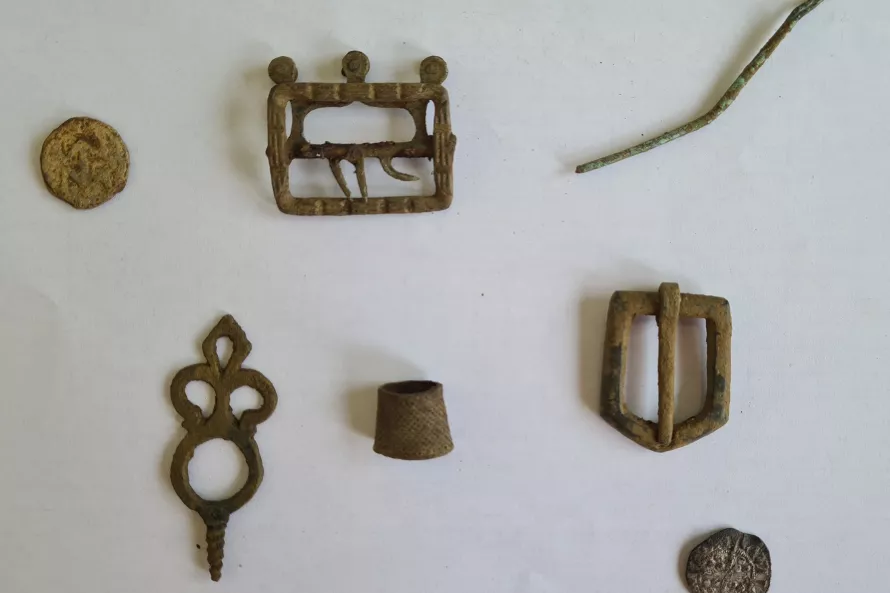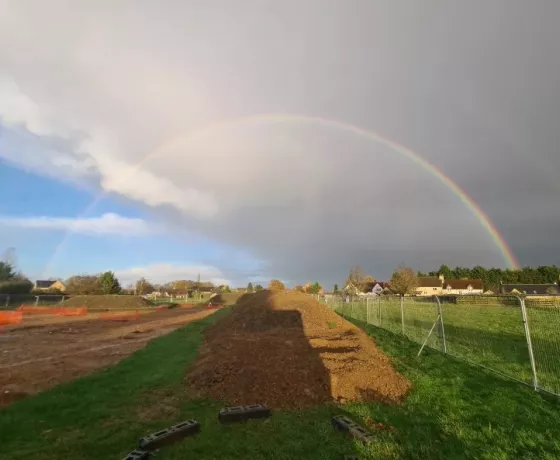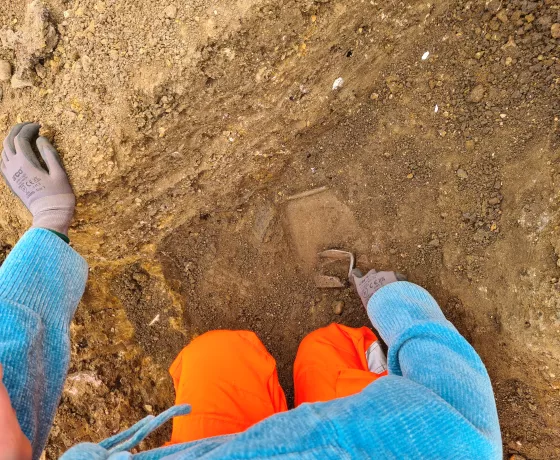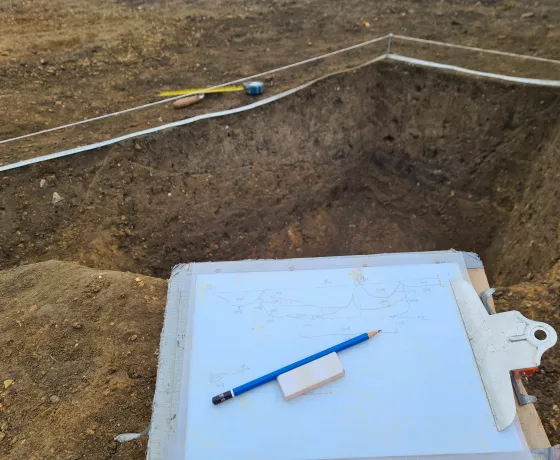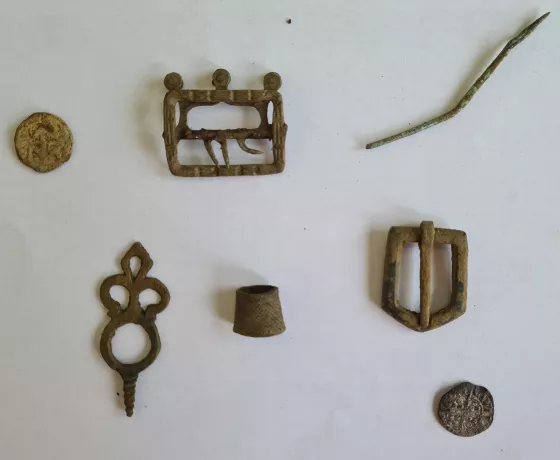Archaeology is not just about an individual, or team, digging holes in the ground. It is, and can be, more often an inclusion of all abilities and expertise which contribute in their own useful way to broadening our knowledge and understanding of the past.
It involves a community. Part of our community is that of the metal detectorist, who, when working collaboratively with archaeologists, can be invaluable in locating metal objects that may otherwise have been lost. We are lucky enough to have a strong rapport with an enthusiastic, knowledgeable and skilful metal detectorist who has carried out two surveys over this site.
It has been exciting for us to discover these personal metal items. These thimbles, buckles, hand-made nails and many more. They provide an insight into not just the historic narrative but the person who held wore or used these objects.
For me two objects stand out which are the farmer's token and a silver coin. The token was used as a substitute to money. The farmer paid their labourer with these tokens which could be used to buy items such as milk, bread and honey. How exciting to think how this token was used as an everyday part of life. The silver coin is also exciting as it is an Edward I coin. It provides very strong dating evidence for us, confirming what period of history this site belongs to. But I also wonder, if this coin could talk, what would it say? Where has it been? What was it used to buy?
Other posts in this collection
Read our latest posts about the archaeological investigations at Aston.

